Epiphone De Luxe Masterbilt Centruy Review Round Hole
Although we may associate the Epiphone brand with Gibson's budget electrics and acoustics, Epiphone was one time one of the great names of American guitar making. Many of the Epiphones produced from the late 50s onwards are fantastic instruments in their own right, simply the new Masterbilt Century archtops represent an endeavour to alter perceptions by revisiting Epiphone's pre-war gilt era.
A considerable effort has gone into getting it right, and the evidence is in the details. The tailpieces have an aged but not distressed look, the fingerboard edges are softly rolled for player comfort, vintage-fashion fretwire is used and period decorative motifs have been revived.
The finishes have a soft sheen rather than loftier-gloss and they appear to have been applied thinly. Check the specs and you'll find that body dimensions, longitudinal bracing and materials are all accurate, besides – including solid bandbox tops. Perhaps most impressive of all are the repro tuners. Epiphone has gone all out for a vintage await, with 'Due east' branding and period-correct buttons, but nether the covers the gears are tweaked for a more than modern 18:i ratio.
Fortunately, adherence to the past combines with an up-to-appointment Shadow NanoFlex HD under-saddle pickup and an eSonic Hard disk drive preamp and stealthily concealed volume and tone controls. A combination jack socket/battery compartment is tucked under the tailpiece swivel.
Masterbilt Olympic
Y'all could depict the Olympic as the nigh basic model, but we don't mean that in a derogatory sense, because that's the way Epiphone made Olympics back in the 30s. Trunk bounden is unmarried-ply; at that place'south no fretboard bounden and the markers are simple pearloid dots. Construction is simpler, too, with a mahogany neck, stacked heel and a scarf-jointed headstock.
In apply
We're off to a good offset, because the Olympic is a box of sheer fun. The experience of playing an out-and-out archtop acoustic with a solid soundboard is entirely dissimilar from a regular flat elevation. Its tone is very midrange-focused, punchy and percussive, and it possesses a slightly boxy clanginess that makes me desire to keep playing. It too does an amazing thing whereby clear harmonic overtones bloom across open up chords.
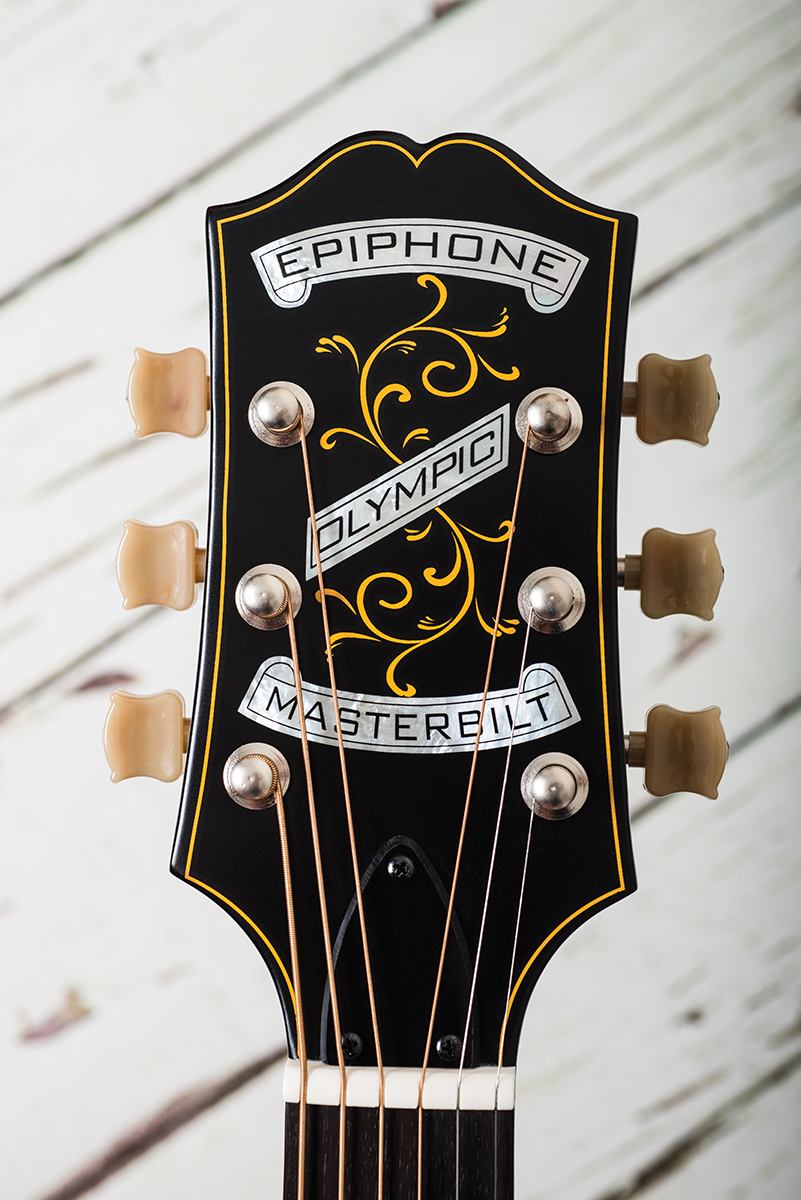
In rhythm mode, it's a surprisingly dynamic and solid performer. You can tell that these guitars were designed to pummel their way through an ensemble, and jazz chord inversions audio clear, harmonically coherent and forceful. Before long, I found myself strumming nearly the neck while comping chords, so shifting my strumming hand closer to the bridge for added dynamic thrust, volume and treble cut.
Moving from jazz voicings to land chords, the Olympic reveals itself to be a complete rootsy country rhythm guitar. You can pick out basslines and add together high inversions as you strum open chords, and everything sounds balanced and articulate.
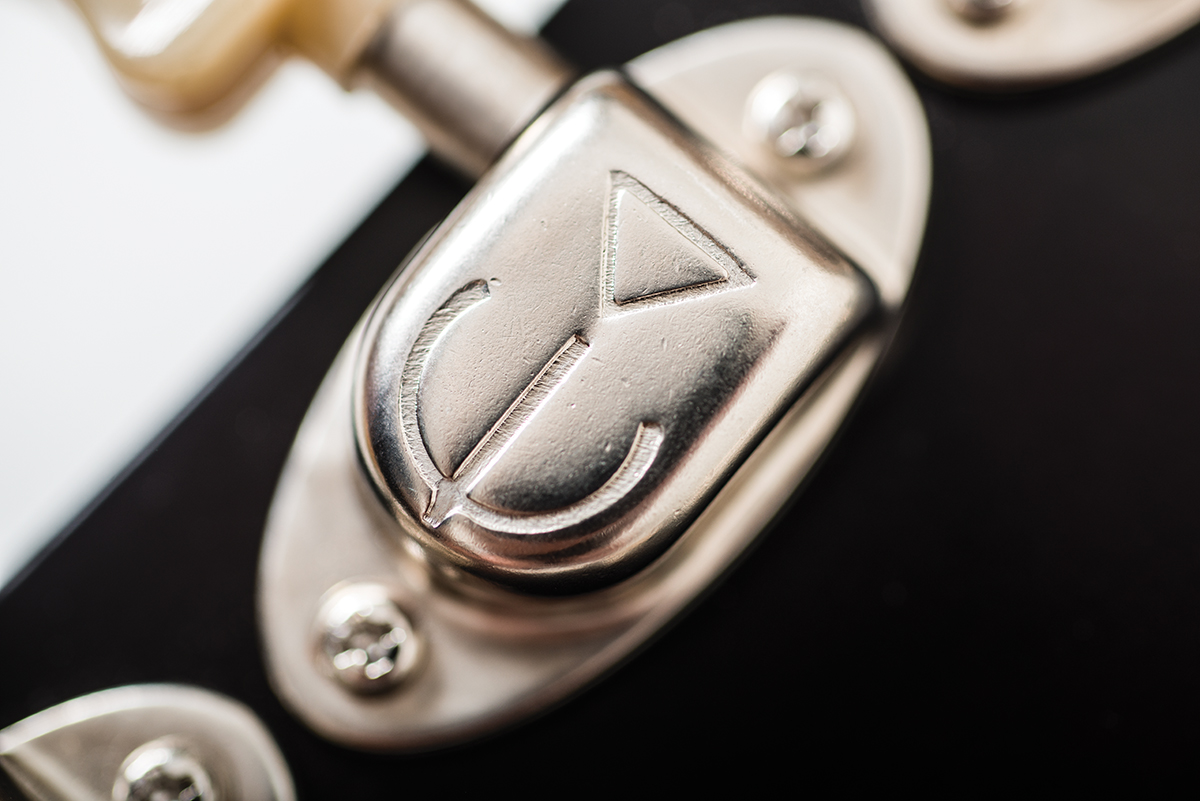
The period-correct tuner casings contain modern-spec xviii:ane gear ratios that tune hands and hold tight
Switch to soloing way and it's immediately apparent why a 1935 Olympic became David Rawlings' master guitar. Compared to a apartment top, the Olympic produces notes with considerably more torso, woody sustain and clarity. The tone has such a pretty, keening and evocative character, it's sure to inspire.

The Olympic and De Luxe models take their volume and tone controls concealed under the treble-side f-pigsty
Information technology'southward also wonderfully even across the strings and all along the fretboard. And then wherever your fingers find themselves, no notes jump out or go subsumed by wolf-y tones, and yous tin slip effortlessly between solo notes, strummed chords and arpeggios.
Masterbilt Zenith
The Zenith is the next one up – in size and price – and its most obvious distinguishing feature is the round and bound soundhole. Nevertheless, this is a bona-fide archtop. Where the Olympic and De Luxe accept their controls tucked inside the treble-side f-holes, the Zenith's sit under the bass side of the soundhole.
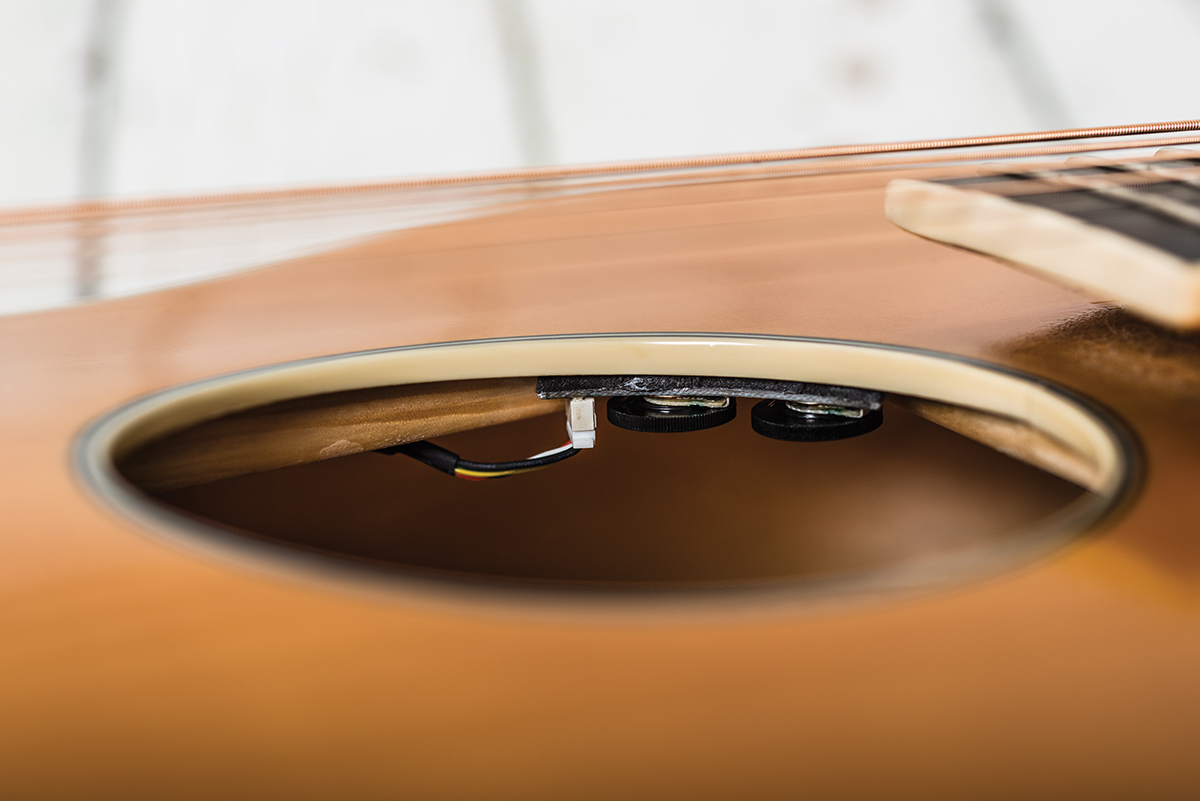
The Zenith'due south controls are under the bass side of the soundhole
The neck is a proper jazz-style affair made from three pieces of mahogany and ii pieces of maple sandwiched together. The bound ebony fingerboard features 'falling snowflake' pearloid markers and the laminated flame-maple body has three-ply binding forepart and back.
In utilise
With a round hole, the playing experience volition be far more familiar to apartment-top owners because the player gets to hear far more of the guitar'south tone. With a conventional f-hole, conversely, a lot of the tone gets projected forwards towards the listener and away from the player.
The Zenith'southward sound is somewhat more familiar, too, with far less midrange accent, a more open up treble and deeper bass. It seems a fair scrap louder, but its sonic character is far less quirky and pronounced.

Despite its round soundhole, the Zenith is a proper archtop with longitudinal bracing
Where the Olympic's pumped mids and rolled-off treble and bass allow it to occupy a frequency space that's so frequently vacated by vintage-voiced flat tops, the Zenith seems to encourage yous to use a more rhythmic approach, with more than right-arm intensity.
Information technology's also fun to play atomic number 82 lines, only notes don't take quite the aforementioned caste of sustain or compact solidity. On the plus side, there's a petty more activeness in the upper harmonics, which lends a more ethereal shimmer to chord piece of work and soloing akin.
Masterbilt De Luxe Classic
All iii of these Epiphone Masterbilt Century models are supplied with a pickguard to exist fitted at the owner's discretion, but this was the only one that arrived with its pickguard already attached. True to the exacting standards of the Masterbilt series, it has the right shape and look, with five-ply binding and a mitre joint in the 1 corner beneath the 15th fret.
Measuring 17 inches across, the trunk is one inch wider than the Zenith's and two.5 inches wider than the Olympic's. This time, the ebony fingerboard is treated to large 'notched snowflake' markers, simply the 'ebonoid' floating bridge is just the same.
In use
With an armful of Masterbilt De Luxe, it would exist quite easy to imagine oneself wearing a cheap tuxedo in an orchestra pit, swathed in tobacco fume with a silent moving picture playing overhead. Information technology's by far the biggest of this bunch in size and sound, but it combines elements of both the Olympic and Zenith. The De Luxe is the loudest past some margin, but it has the highs and lows of the Zenith combined with the fifty-fifty remainder, midrange musculus and sustain of the Olympic. It also has the almost refined and sophisticated tone. No doubtfulness y'all can bash out a rhythm part with considerable cutting and gusto, but it responds simply as readily to a soft impact that rounds out the bass and allows the extended treble to breathe.

The De Luxe's pickguard features 5-ply binding and actually looks the part
The De Luxe doesn't quite accept the Olympic'south remarkable evenness but information technology comes close, and at that place's a dusting of high harmonics that linger on as unmarried notes fade leisurely away. It may not have quite the open-throated shout of the Zenith or the Olympic'southward accentuated sonic character simply, simply put, the De Luxe is the all-time all-rounder.
All iii of these guitars are fitted with the same eSonic Hard disk preamp and Shadow NanoFlex HD under-saddle pickup. The pickup system was designed with defended acoustic amplification in heed, which typically comes with the kind of powerful onboard parametric EQ that volition allow yous to sculpt not only the kind of toneful warmth synonymous with the Jazz Historic period but likewise much more contemporary audio-visual sounds ideal for the mod player.

Like the originals, the repro tuner buttons are flecked with colour
Output level is high and noise is low, but be mindful that the voicing is relatively bright when plugged directly into a apartment-response desk-bound or PA system, so you lot may want to use the instrument'south onboard tone control to roll off the high end if you don't have an audio-visual amp or preamp on hand. David Rawlings stopped using pickups live many years ago and has since relied exclusively upon microphones but if that'southward not an option, we're happy to study that although the mids are less full, the bass response retains much of its woody graphic symbol.
Epiphone has pulled off something spectacular by creating three distinct models that combine modernistic Far Eastern production with an authentically vintage vibe. The tuners are a triumph, and kudos to Epiphone for going the extra mile. Allow's hope i or two other heritage brands will finally be inspired to do too.
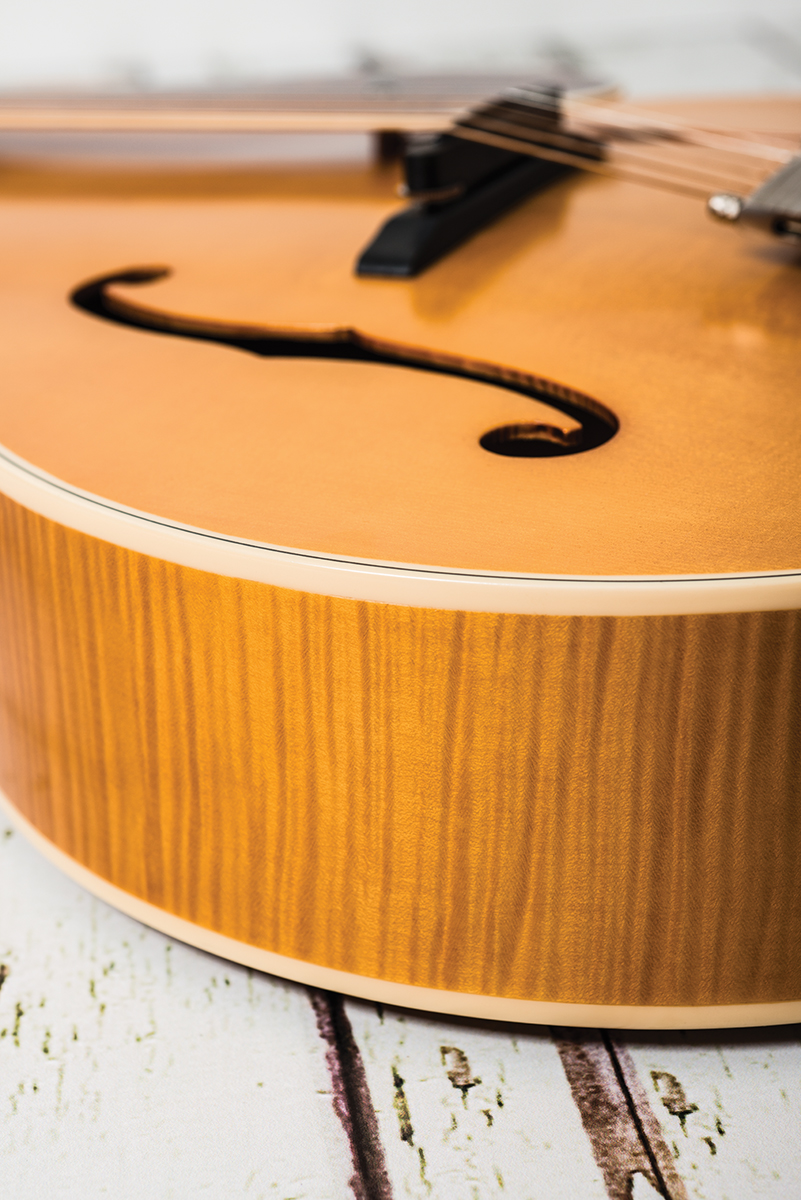
The flamey figuring on the De Luxe's maple back and sides is vivid and vibey
The gauge of fretwire is judged perfectly and Epiphone has accomplished that elusive goal of carving a fat vintage cervix profile that isn't unwieldy or clubby. In fact, it's a sheer please.
You lot shouldn't brand snap judgements if you get to try one of these. Fifty-fifty more than than a solid woods flat top, these archtops require a few minutes of playing time before they warm up properly. Perhaps the bridge bases could be fabricated to fit the tiptop a fiddling more snugly, just ultimately, I don't think I take ever had then much fun playing archtop acoustics. So which i would I cull? That'due south a tough telephone call, but when they are somewhen returned to Epiphone I think there will be an Olympic-sized hole in my collection.
Key Features
Olympic
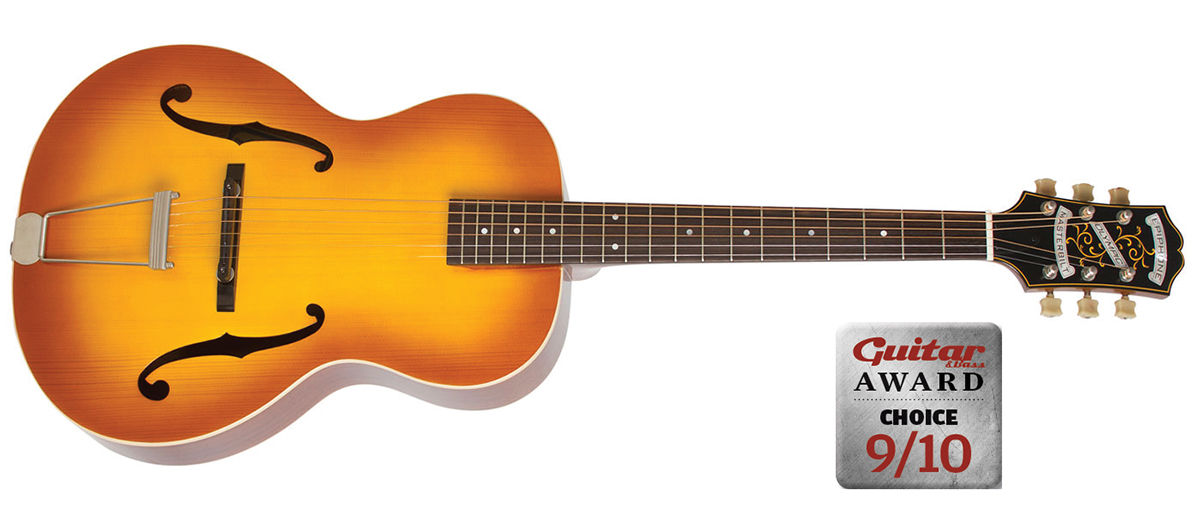
• Price £499
• Description Archtop audio-visual 6-string guitar, manufactured in Indonesia
• Build solid bandbox acme with f-holes and longitudinal bracing, laminated mahogany dorsum and sides, fix mahogany rounded C neck, os nut, rosewood fingerboard with dot markers and 20 vintage-style frets
• Hardware Aged nickel trapeze tailpiece, floating ebonoid span, Historic Epiphone reissue tuners with Marboloid 'Crown' buttons & 18:one ratio
• Electrics Shadow NanoFlex HD under-saddle pickup with eSonic HD preamp, book and tone controls
• Scale length 648mm/25.5"
• Neck width 43mm at nut, 55mm at twelfth fret
• N eck depth 23mm at first fret, 27mm at 9th fret
• Cord spacing 36mm at nut, 54.5mm at bridge
• Weight two.2kg/4.8lb
• Left-handers Yes (simply spin the bridge around)
• Finishes Aged Gloss Honeyburst and Violin Burst
• Contact Gibson Europe www.epiphone.com
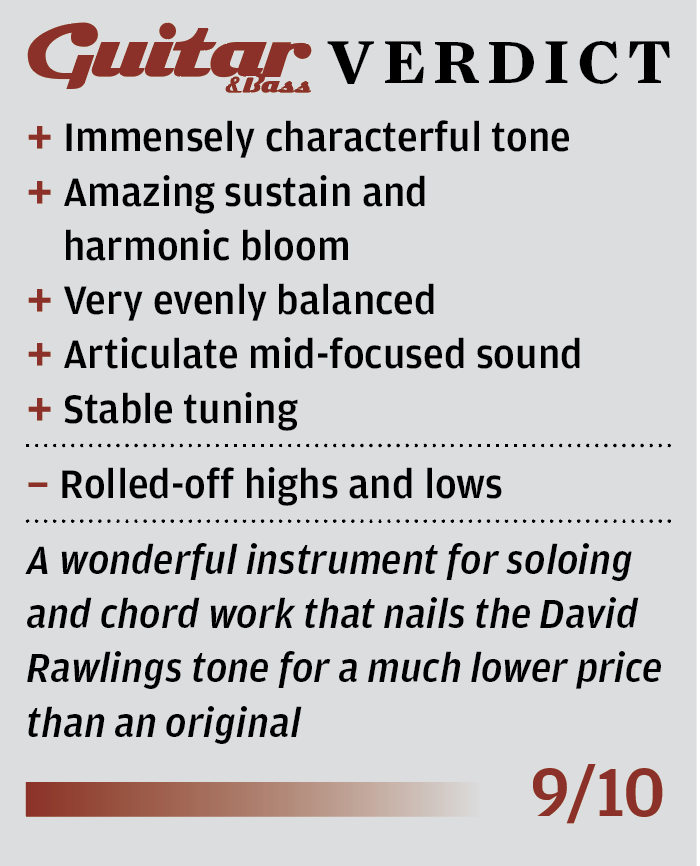
Zenith
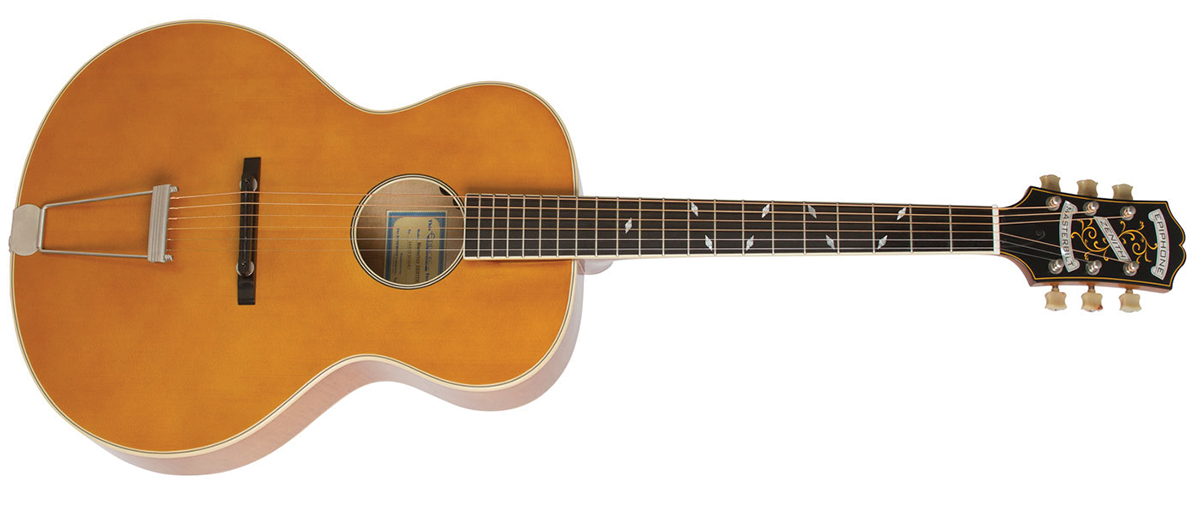
• Price £599
• Description Archtop acoustic half-dozen-string guitar, manufactured in Indonesia
• Build solid spruce top with round soundhole and longitudinal bracing, laminated flame-maple back and sides, ready five piece mahogany/maple rounded C cervix, bone nut, ebony fingerboard with falling snowflake markers and 20 vintage-fashion frets
• Hardware Aged nickel trapeze tailpiece, floating ebonoid bridge, Historic Epiphone reissue tuners with Marboloid 'Crown' buttons & xviii:1 ratio
• Electrics Shadow NanoFlex Hard disk drive under-saddle pickup with eSonic Hard disk preamp, volume and tone controls
• Calibration length 648mm/25.5"
• Neck width 43mm at nut, 55mm at twelfth fret
• Cervix depth 23mm at first fret, 27mm at ninth fret
• String spacing 36mm at nut, 54.5mm at span
• Weight 2.3kg/5lb
• Left-handers Yes (just spin the bridge effectually)
• Finishes Anile Gloss Vintage Natural and Vintage Sunburst
• Options The Zenith Classic features f-holes rather than a round soundhole
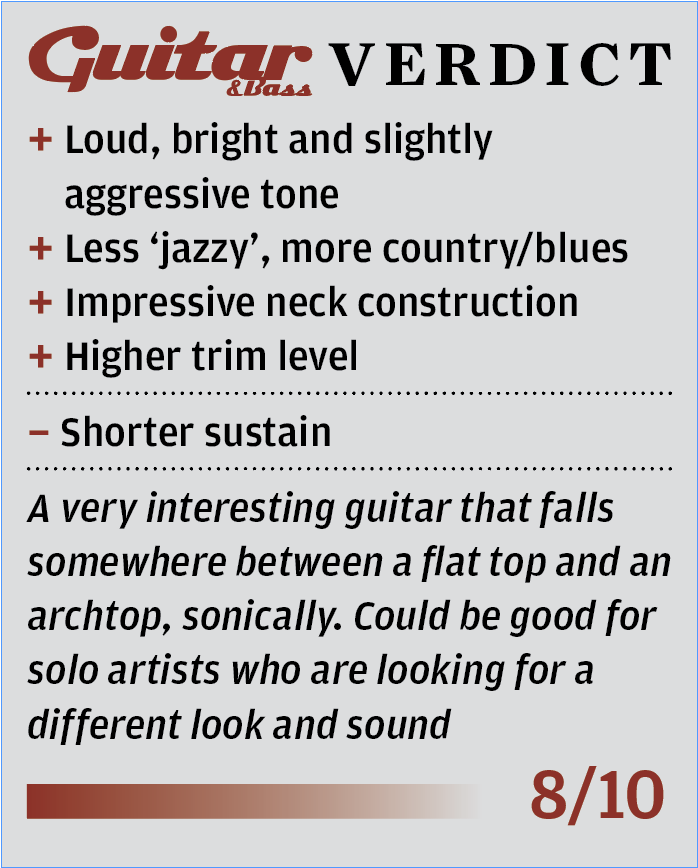
De Luxe Classic
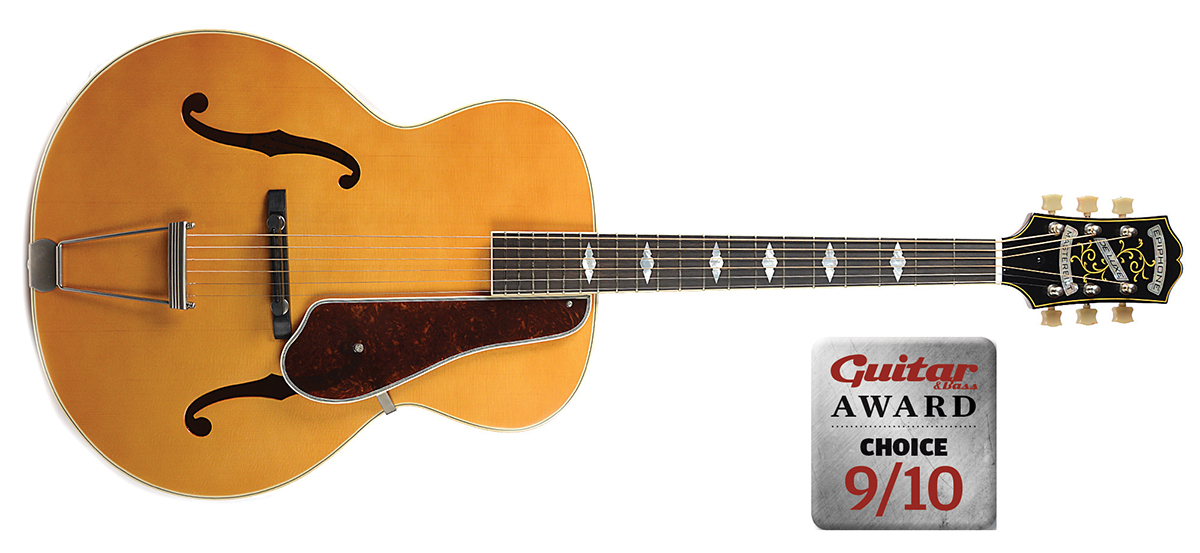
• Toll £729
• Description Archtop acoustic 6-cord guitar, manufactured in Indonesia
• Build solid spruce top with f-holes and longitudinal bracing, laminated flame-maple back and sides, set five- slice mahogany/maple rounded C neck, bone nut, ebony fingerboard with notched diamond markers and 20 vintage-style frets
• Hardware Aged nickel trapeze tailpiece, floating ebonoid bridge, Celebrated Epiphone reissue tuners with Marboloid 'Crown' buttons & 18:ane ratio
• Electrics Shadow NanoFlex HD under-saddle pickup with eSonic HD preamp, book and tone controls
• Scale length 648mm/25.5"
• Neck width 43mm at nut, 55mm at twelfth fret
• Cervix depth 23mm at beginning fret, 27mm at ninth fret
• String spacing 36mm at nut, 54.5mm at bridge
• Weight two.3kg/5lb
• Left-handers Yeah (only spin the span around)
• Finishes Anile Gloss Vintage Natural and Vintage Sunburst
• Options The Deluxe features a round soundhole rather than f-holes
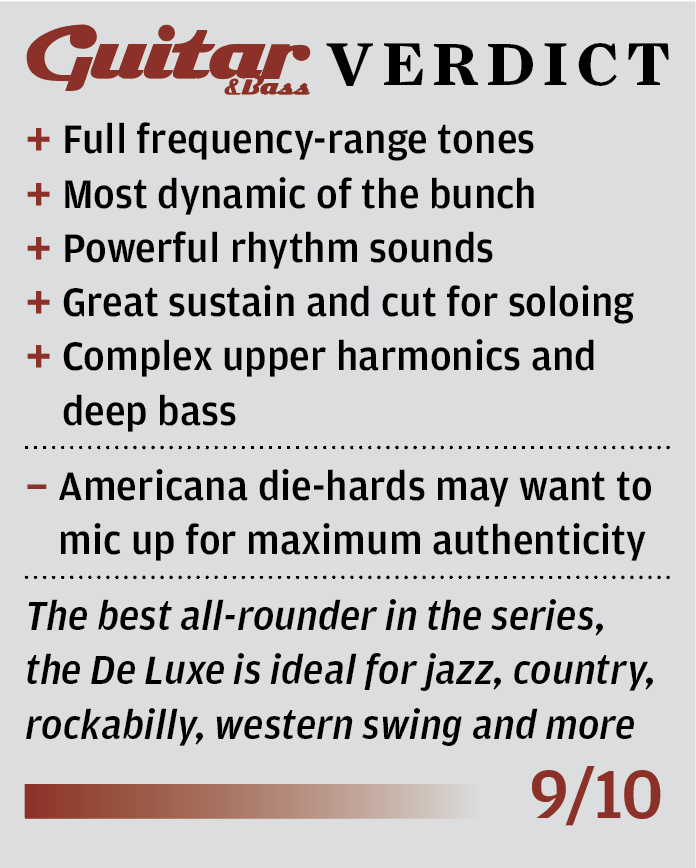
Source: https://guitar.com/review/epiphonemasterbilt/
Posting Komentar untuk "Epiphone De Luxe Masterbilt Centruy Review Round Hole"